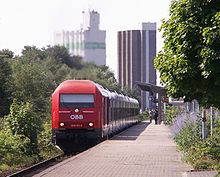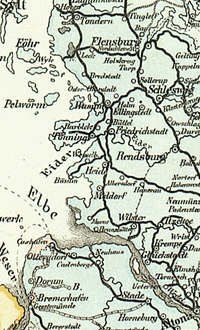Marsh Railway
| Marsh Railway | |||||||||||||||||||||||||||||||||||||||||||||||||||||||||||||||||||||||||||||||||||||||||||||||||||||||||||||||||||||||||||||||||||||||||||||||||||||||||||||||||||||||||||||||||||||||||||||||||||||||||||||||||||||||||||||||||||||||||||||||||||||||||||||||||||||||||||||||||||||||||||||||||||||||||||||||||||||||||||||||||||||||||||||||||||||||||||||||||||||||||||||||||||||||||||||||||||||||||||||||||||||||||||||||||||||||||||||||||||||||||||||||||||||||||||||||||||||||||||||||||||||||||||||||||||||||||||||||||||||||||||||||||||||||||||||||||||||||||||||||||||||||||||||||||||||||||||||||||||||||||||||||||||||||||||||||||||||||||||||||||||||||||||||||||||||||||
|---|---|---|---|---|---|---|---|---|---|---|---|---|---|---|---|---|---|---|---|---|---|---|---|---|---|---|---|---|---|---|---|---|---|---|---|---|---|---|---|---|---|---|---|---|---|---|---|---|---|---|---|---|---|---|---|---|---|---|---|---|---|---|---|---|---|---|---|---|---|---|---|---|---|---|---|---|---|---|---|---|---|---|---|---|---|---|---|---|---|---|---|---|---|---|---|---|---|---|---|---|---|---|---|---|---|---|---|---|---|---|---|---|---|---|---|---|---|---|---|---|---|---|---|---|---|---|---|---|---|---|---|---|---|---|---|---|---|---|---|---|---|---|---|---|---|---|---|---|---|---|---|---|---|---|---|---|---|---|---|---|---|---|---|---|---|---|---|---|---|---|---|---|---|---|---|---|---|---|---|---|---|---|---|---|---|---|---|---|---|---|---|---|---|---|---|---|---|---|---|---|---|---|---|---|---|---|---|---|---|---|---|---|---|---|---|---|---|---|---|---|---|---|---|---|---|---|---|---|---|---|---|---|---|---|---|---|---|---|---|---|---|---|---|---|---|---|---|---|---|---|---|---|---|---|---|---|---|---|---|---|---|---|---|---|---|---|---|---|---|---|---|---|---|---|---|---|---|---|---|---|---|---|---|---|---|---|---|---|---|---|---|---|---|---|---|---|---|---|---|---|---|---|---|---|---|---|---|---|---|---|---|---|---|---|---|---|---|---|---|---|---|---|---|---|---|---|---|---|---|---|---|---|---|---|---|---|---|---|---|---|---|---|---|---|---|---|---|---|---|---|---|---|---|---|---|---|---|---|---|---|---|---|---|---|---|---|---|---|---|---|---|---|---|---|---|---|---|---|---|---|---|---|---|---|---|---|---|---|---|---|---|---|---|---|---|---|---|---|---|---|---|---|---|---|---|---|---|---|---|---|---|---|---|---|---|---|---|---|---|---|---|---|---|---|---|---|---|---|---|---|---|---|---|---|---|---|---|---|---|---|---|---|---|---|---|---|---|---|---|---|---|---|---|---|---|---|---|---|---|---|---|---|---|---|---|---|---|---|---|---|---|---|---|---|---|---|---|---|---|---|---|---|---|---|---|---|---|---|---|---|---|---|---|---|---|---|---|---|---|---|---|---|---|---|---|---|---|---|---|---|---|---|---|---|---|---|---|---|---|---|---|---|---|---|---|---|---|---|---|---|---|---|---|---|---|---|---|---|---|---|---|---|---|---|---|---|---|---|---|---|---|---|---|---|---|---|---|---|---|---|---|---|---|---|---|---|---|---|---|---|---|---|---|---|---|---|---|---|---|---|---|---|---|---|---|---|---|---|---|---|---|---|---|---|---|---|---|---|---|---|---|---|---|---|---|---|---|---|---|---|---|---|---|---|---|---|---|---|---|---|---|---|---|---|---|---|---|---|---|---|---|---|---|---|---|---|---|---|---|---|---|---|---|---|---|---|---|---|---|---|---|---|---|---|---|---|---|---|---|---|---|---|---|---|---|
 | |||||||||||||||||||||||||||||||||||||||||||||||||||||||||||||||||||||||||||||||||||||||||||||||||||||||||||||||||||||||||||||||||||||||||||||||||||||||||||||||||||||||||||||||||||||||||||||||||||||||||||||||||||||||||||||||||||||||||||||||||||||||||||||||||||||||||||||||||||||||||||||||||||||||||||||||||||||||||||||||||||||||||||||||||||||||||||||||||||||||||||||||||||||||||||||||||||||||||||||||||||||||||||||||||||||||||||||||||||||||||||||||||||||||||||||||||||||||||||||||||||||||||||||||||||||||||||||||||||||||||||||||||||||||||||||||||||||||||||||||||||||||||||||||||||||||||||||||||||||||||||||||||||||||||||||||||||||||||||||||||||||||||||||||||||||||||
| Overview | |||||||||||||||||||||||||||||||||||||||||||||||||||||||||||||||||||||||||||||||||||||||||||||||||||||||||||||||||||||||||||||||||||||||||||||||||||||||||||||||||||||||||||||||||||||||||||||||||||||||||||||||||||||||||||||||||||||||||||||||||||||||||||||||||||||||||||||||||||||||||||||||||||||||||||||||||||||||||||||||||||||||||||||||||||||||||||||||||||||||||||||||||||||||||||||||||||||||||||||||||||||||||||||||||||||||||||||||||||||||||||||||||||||||||||||||||||||||||||||||||||||||||||||||||||||||||||||||||||||||||||||||||||||||||||||||||||||||||||||||||||||||||||||||||||||||||||||||||||||||||||||||||||||||||||||||||||||||||||||||||||||||||||||||||||||||||
| Native name | Marschbahn | ||||||||||||||||||||||||||||||||||||||||||||||||||||||||||||||||||||||||||||||||||||||||||||||||||||||||||||||||||||||||||||||||||||||||||||||||||||||||||||||||||||||||||||||||||||||||||||||||||||||||||||||||||||||||||||||||||||||||||||||||||||||||||||||||||||||||||||||||||||||||||||||||||||||||||||||||||||||||||||||||||||||||||||||||||||||||||||||||||||||||||||||||||||||||||||||||||||||||||||||||||||||||||||||||||||||||||||||||||||||||||||||||||||||||||||||||||||||||||||||||||||||||||||||||||||||||||||||||||||||||||||||||||||||||||||||||||||||||||||||||||||||||||||||||||||||||||||||||||||||||||||||||||||||||||||||||||||||||||||||||||||||||||||||||||||||||
| Line number |
| ||||||||||||||||||||||||||||||||||||||||||||||||||||||||||||||||||||||||||||||||||||||||||||||||||||||||||||||||||||||||||||||||||||||||||||||||||||||||||||||||||||||||||||||||||||||||||||||||||||||||||||||||||||||||||||||||||||||||||||||||||||||||||||||||||||||||||||||||||||||||||||||||||||||||||||||||||||||||||||||||||||||||||||||||||||||||||||||||||||||||||||||||||||||||||||||||||||||||||||||||||||||||||||||||||||||||||||||||||||||||||||||||||||||||||||||||||||||||||||||||||||||||||||||||||||||||||||||||||||||||||||||||||||||||||||||||||||||||||||||||||||||||||||||||||||||||||||||||||||||||||||||||||||||||||||||||||||||||||||||||||||||||||||||||||||||||
| Locale | Schleswig-Holstein,Germany | ||||||||||||||||||||||||||||||||||||||||||||||||||||||||||||||||||||||||||||||||||||||||||||||||||||||||||||||||||||||||||||||||||||||||||||||||||||||||||||||||||||||||||||||||||||||||||||||||||||||||||||||||||||||||||||||||||||||||||||||||||||||||||||||||||||||||||||||||||||||||||||||||||||||||||||||||||||||||||||||||||||||||||||||||||||||||||||||||||||||||||||||||||||||||||||||||||||||||||||||||||||||||||||||||||||||||||||||||||||||||||||||||||||||||||||||||||||||||||||||||||||||||||||||||||||||||||||||||||||||||||||||||||||||||||||||||||||||||||||||||||||||||||||||||||||||||||||||||||||||||||||||||||||||||||||||||||||||||||||||||||||||||||||||||||||||||
| Service | |||||||||||||||||||||||||||||||||||||||||||||||||||||||||||||||||||||||||||||||||||||||||||||||||||||||||||||||||||||||||||||||||||||||||||||||||||||||||||||||||||||||||||||||||||||||||||||||||||||||||||||||||||||||||||||||||||||||||||||||||||||||||||||||||||||||||||||||||||||||||||||||||||||||||||||||||||||||||||||||||||||||||||||||||||||||||||||||||||||||||||||||||||||||||||||||||||||||||||||||||||||||||||||||||||||||||||||||||||||||||||||||||||||||||||||||||||||||||||||||||||||||||||||||||||||||||||||||||||||||||||||||||||||||||||||||||||||||||||||||||||||||||||||||||||||||||||||||||||||||||||||||||||||||||||||||||||||||||||||||||||||||||||||||||||||||||
| Route number |
| ||||||||||||||||||||||||||||||||||||||||||||||||||||||||||||||||||||||||||||||||||||||||||||||||||||||||||||||||||||||||||||||||||||||||||||||||||||||||||||||||||||||||||||||||||||||||||||||||||||||||||||||||||||||||||||||||||||||||||||||||||||||||||||||||||||||||||||||||||||||||||||||||||||||||||||||||||||||||||||||||||||||||||||||||||||||||||||||||||||||||||||||||||||||||||||||||||||||||||||||||||||||||||||||||||||||||||||||||||||||||||||||||||||||||||||||||||||||||||||||||||||||||||||||||||||||||||||||||||||||||||||||||||||||||||||||||||||||||||||||||||||||||||||||||||||||||||||||||||||||||||||||||||||||||||||||||||||||||||||||||||||||||||||||||||||||||
| Technical | |||||||||||||||||||||||||||||||||||||||||||||||||||||||||||||||||||||||||||||||||||||||||||||||||||||||||||||||||||||||||||||||||||||||||||||||||||||||||||||||||||||||||||||||||||||||||||||||||||||||||||||||||||||||||||||||||||||||||||||||||||||||||||||||||||||||||||||||||||||||||||||||||||||||||||||||||||||||||||||||||||||||||||||||||||||||||||||||||||||||||||||||||||||||||||||||||||||||||||||||||||||||||||||||||||||||||||||||||||||||||||||||||||||||||||||||||||||||||||||||||||||||||||||||||||||||||||||||||||||||||||||||||||||||||||||||||||||||||||||||||||||||||||||||||||||||||||||||||||||||||||||||||||||||||||||||||||||||||||||||||||||||||||||||||||||||||
| Line length | 211.1 km (131.2 mi) | ||||||||||||||||||||||||||||||||||||||||||||||||||||||||||||||||||||||||||||||||||||||||||||||||||||||||||||||||||||||||||||||||||||||||||||||||||||||||||||||||||||||||||||||||||||||||||||||||||||||||||||||||||||||||||||||||||||||||||||||||||||||||||||||||||||||||||||||||||||||||||||||||||||||||||||||||||||||||||||||||||||||||||||||||||||||||||||||||||||||||||||||||||||||||||||||||||||||||||||||||||||||||||||||||||||||||||||||||||||||||||||||||||||||||||||||||||||||||||||||||||||||||||||||||||||||||||||||||||||||||||||||||||||||||||||||||||||||||||||||||||||||||||||||||||||||||||||||||||||||||||||||||||||||||||||||||||||||||||||||||||||||||||||||||||||||||
| Number of tracks |
| ||||||||||||||||||||||||||||||||||||||||||||||||||||||||||||||||||||||||||||||||||||||||||||||||||||||||||||||||||||||||||||||||||||||||||||||||||||||||||||||||||||||||||||||||||||||||||||||||||||||||||||||||||||||||||||||||||||||||||||||||||||||||||||||||||||||||||||||||||||||||||||||||||||||||||||||||||||||||||||||||||||||||||||||||||||||||||||||||||||||||||||||||||||||||||||||||||||||||||||||||||||||||||||||||||||||||||||||||||||||||||||||||||||||||||||||||||||||||||||||||||||||||||||||||||||||||||||||||||||||||||||||||||||||||||||||||||||||||||||||||||||||||||||||||||||||||||||||||||||||||||||||||||||||||||||||||||||||||||||||||||||||||||||||||||||||||
| Track gauge | 1,435 mm(4 ft8+1⁄2in)standard gauge | ||||||||||||||||||||||||||||||||||||||||||||||||||||||||||||||||||||||||||||||||||||||||||||||||||||||||||||||||||||||||||||||||||||||||||||||||||||||||||||||||||||||||||||||||||||||||||||||||||||||||||||||||||||||||||||||||||||||||||||||||||||||||||||||||||||||||||||||||||||||||||||||||||||||||||||||||||||||||||||||||||||||||||||||||||||||||||||||||||||||||||||||||||||||||||||||||||||||||||||||||||||||||||||||||||||||||||||||||||||||||||||||||||||||||||||||||||||||||||||||||||||||||||||||||||||||||||||||||||||||||||||||||||||||||||||||||||||||||||||||||||||||||||||||||||||||||||||||||||||||||||||||||||||||||||||||||||||||||||||||||||||||||||||||||||||||||
| Electrification | (Elmshorn–Itzehoe)15 kV/16.7 HzACoverhead catenary | ||||||||||||||||||||||||||||||||||||||||||||||||||||||||||||||||||||||||||||||||||||||||||||||||||||||||||||||||||||||||||||||||||||||||||||||||||||||||||||||||||||||||||||||||||||||||||||||||||||||||||||||||||||||||||||||||||||||||||||||||||||||||||||||||||||||||||||||||||||||||||||||||||||||||||||||||||||||||||||||||||||||||||||||||||||||||||||||||||||||||||||||||||||||||||||||||||||||||||||||||||||||||||||||||||||||||||||||||||||||||||||||||||||||||||||||||||||||||||||||||||||||||||||||||||||||||||||||||||||||||||||||||||||||||||||||||||||||||||||||||||||||||||||||||||||||||||||||||||||||||||||||||||||||||||||||||||||||||||||||||||||||||||||||||||||||||
| |||||||||||||||||||||||||||||||||||||||||||||||||||||||||||||||||||||||||||||||||||||||||||||||||||||||||||||||||||||||||||||||||||||||||||||||||||||||||||||||||||||||||||||||||||||||||||||||||||||||||||||||||||||||||||||||||||||||||||||||||||||||||||||||||||||||||||||||||||||||||||||||||||||||||||||||||||||||||||||||||||||||||||||||||||||||||||||||||||||||||||||||||||||||||||||||||||||||||||||||||||||||||||||||||||||||||||||||||||||||||||||||||||||||||||||||||||||||||||||||||||||||||||||||||||||||||||||||||||||||||||||||||||||||||||||||||||||||||||||||||||||||||||||||||||||||||||||||||||||||||||||||||||||||||||||||||||||||||||||||||||||||||||||||||||||||||
TheMarsh Railway(German:Marschbahn) is amain linein the state ofSchleswig-Holsteinin Germany that links the stations ofElmshornin the south andWesterlandon theisland of Syltin the north. It is part of 237 km (147 mi) long route fromHamburg-Altonato Westerland (Sylt) and is listed in theDeutsche Bahntimetables asKursbuchstrecke 130.The first part of it was opened in 1845 and is one of theoldest lines in Germany.
Route
[edit]The Marsh Railway, as its name suggests, mainly runs throughmarshlands.There are also some sections of the line that run through the higher-lyinggeest.The line branches off theHamburg-Altona-Kiel railway lineinElmshorn.From Elmshorn, it runs in an arc viaGlückstadttoItzehoe.The line then crosses theKiel Canalon the 42 m (138 ft) highHochdonn High Bridge.The bridge's total length is 2,218 m (7,277 ft) and its main span over the channel is 143 m (469 ft) long. There is also abascule bridgenorth ofHusumstation. BetweenKlanxbüllandMorsumstations the line runs across theHindenburgdamm(causeway) through theNorth Frisianmudflats.
History
[edit]The first section of the current Marsh Railway was built by theGlückstadt-Elmshorn Railway Company(Glückstadt-Elmshorner Eisenbahn-Gesellschaft) shortly after the opening of theAltona–Kiel lineon 18 September 1844. The company opened a line from Elmshorn toGlückstadtport station on 20 July 1845. Twelve years later, on 15 October 1857, the line was realigned in Glückstadt and extended to the edge of theStörriver inItzehoe.In 1878, a swing bridge was built across the Stör—which was replaced in 1910 during the duplication of the line by two bascule bridges—and the line was extended to theHeidestation of theNeumünster–Heide–Karolinenkoog line,which opened on 22 August 1877.
On 1 January 1879 theGlückstadt-Elmshorn Railway Companybecame theHolstein Marsh Railway Company(Holsteinische Marschbahn-Gesellschaft). In 1888, this company was acquired by theSchleswig-Holstein Marsh Railway Company(Schleswig-Holsteinische Marschbahn-Gesellschaft). On 1 July 1890, the company was acquired by thePrussiangovernment and it became part of thePrussian State Railways.
In 1886 construction began on an extension and on 1 September 1886 the line was opened viaLundenand a bridge over theEidernear Friedrichstadt toHusum,where it connected with theFlensburg–Husum–Tönning line.The line was extended further north toBredstedton 17 October 1887 and toNiebüllon 15 November 1887. The line was subsequently extended further north to Tønder, connecting to branch lines toTinglevand Højer Sluse, which was the port for a ferry connection toSylt.The line was extended to Bredebro, Scherrebek,RibeandBramming,where it connected with theDanish rail network.
-
Rail network 1849
-
Rail network 1861
-
Rail network 1899
1920-1926
[edit] |
 |
 |
 |
 |
 |
 |
 |
 |
 |
In 1920northern Schleswigbecame part ofDenmark,and the border was established between Niebüll and Tønder. This meant that traffic to Sylt had to cross the German-Danish border twice, although the Danish authorities allowed sealed transit trains to operate, avoiding customs inspections of passengers. The operation of transit trains and the Hoyer–Sylt ferry ended with the inauguration of the Hindenburg causeway in 1927.
Originally, the Marsh Railway ran from Wilster directly to St. Michaelisdonn. During the construction of the Kiel Canal a swing bridge was built on the line at Taterpfahl near St. Margarethen. During the widening of the canal in 1920, a newnon-opening high bridgewas built on thegeestat Hochdonn on a 5.8 km long bypass route. The new train route with the new bridge was originally planned directly fromItzehoetoMeldorf,but because of protests fromWilsterandSankt Michaelisdonn,the line was elongated and rerouted to include these towns. The old track was rebuilt to run from Wilster to Brunsbüttelkoog and on the north side to Brunsbüttel Nord.
1927-1948
[edit]Significant changes took place on 1 June 1927 with the opening of Hindenburg causeway, which was prepared in 1922 by prolonging the line from Niebüll to Klanxbüll to enable material transports.Deutsche Reichsbahn(German State Railways) opened a new station atWesterlandtogether with the connecting part of the line. TheSylt Island Railwaylost its traffic betweenMunkmarschand Westerland, because the ferry service between Hoyer and Sylt had been closed. TheIsland Railwaybuilt a station next to theReichsbahnstation, with a simple reception building.
1948–1993
[edit]AfterWorld War IImany (often long) express trains ran to Westerland, especially in the summer season. Most trains ran beyondHamburgtowardsCologneand theRuhr,some went to southern Germany. Daily service also operated as interzonal trains from Berlin (running without stopping in the formerEast Germany), which were augmented in the summer at weekends by a second pair of trains.
Until the 1970s, these services were hauled byclass 01.10locomotives. These were replaced byclass 218diesels.
A significant improvement of services on the Marsh line occurred with the timetable of summer 1978. Regular intervalIntercity(IC) trains were introduced between Cologne and Hamburg, with some first and second class carriages running beyond Hamburg to Westerland. A year later IC connections from Westerland toFrankfurt am MainandMunichwere added.
Clock-face timetable since 1991
[edit]The 1991 there was a complete transformation of the passenger transport services on the Marsh line and in Schleswig–Holstein. New two-hourly express trains were introduced that ran between Hamburg and Heide making even fewer stops than IC trains. These trains were aimed at offering travel times of less than two and a half hours from Hamburg to North Sea resorts, such asBüsumvia Heide,Dagebüllvia Niebüll andSankt Peter-Ordingvia Husum. Hourly local trains were introduced, stopping at all stations to Husum. Trains were added during peak hours fromPinnebergto Itzehoe.
Notes
[edit]- ^Eisenbahnatlas Deutschland (German railway atlas).Schweers + Wall. 2009. pp. 1, 2, 11.ISBN978-3-89494-139-0.
References
[edit]- Bock, Hans (1989).Die Marschbahn von Altona nach Westerland (The Marsh Railway from Altona to Westerland)(in German). Heide: Boyens.ISBN3-8042-0458-9.
- Landesarchiv Schleswig-Holstein/Altonaer Museum (1994).Schienen zum Fortschritt. 150 Jahre Eisenbahn in Schleswig-Holstein. (Lines to progress. 150 years of railways in Schleswig-Holstein)(in German). Schleswig and Hamburg: Self-published, exhibition catalog.
- Staisch, Erich, ed. (1994).Der Zug nach Norden (The railway to the north)(in German). Hamburg: Ernst Kabel Verlag.ISBN3-8225-0298-7.
- Stumpf, Rolf (2003).Die Eisenbahn nach Sylt (The railway to Sylt)(in German). Freiburg: EK regionale Verkehrsgeschichte Band 38.ISBN3-88255-455-X.
External links
[edit]- TheMarschbahn
- Route description
- The last days of the DB-RBSH on the Marsh Railway
- Photo reports at Bahnfotokiste about the Marsh Railway by Jan Borchers
- Photo gallery of the block section by Jan-Geert Lukner
- route overview and kilometrage
- Cross-border railway lines in Denmark
- Cross-border railway lines in Germany
- Railway lines in Schleswig-Holstein
- Railway lines in Denmark
- Railway lines opened in 1845
- Establishments in Schleswig-Holstein in 1845
- Buildings and structures in Pinneberg (district)
- Rail transport in the Region of Southern Denmark
- Steinburg
- Dithmarschen
- Buildings and structures in Nordfriesland
- Sylt



